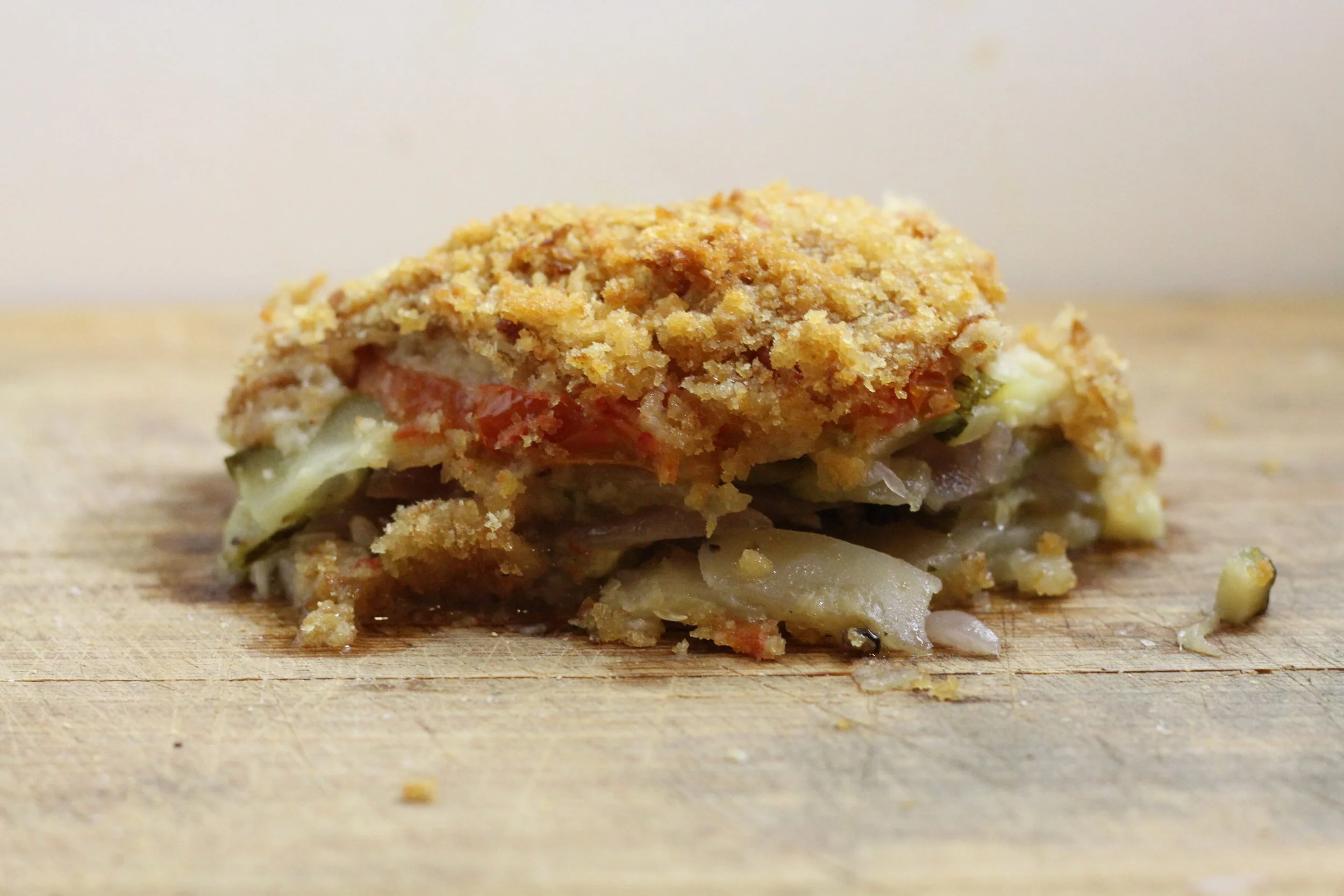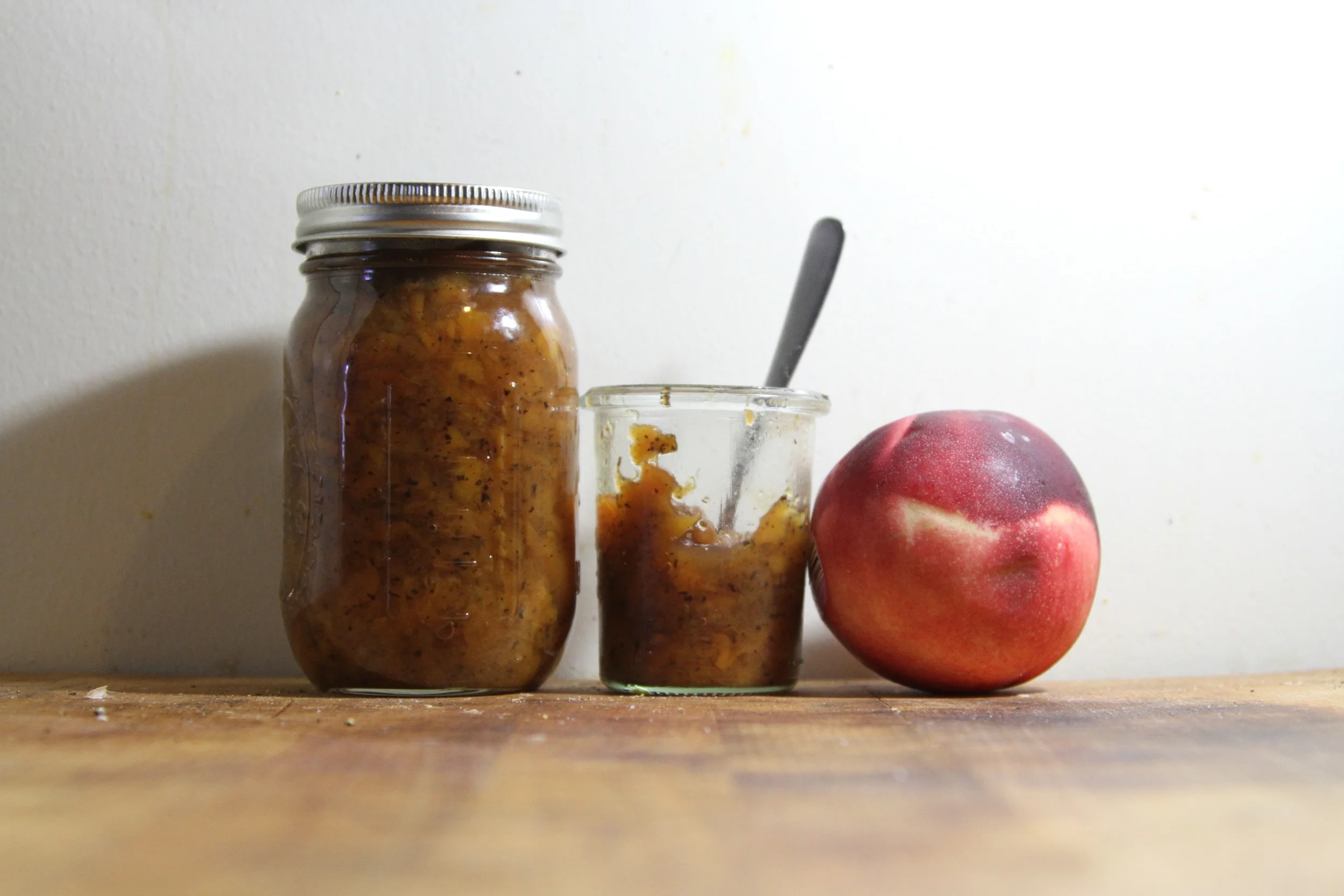Prune, by Gabrielle Hamilton

Deep Cuts are appreciations of older favorites.
Whenever I think about Gabrielle Hamilton's food, I think of a dessert I had at Prune a few years ago: a thin slice of toasted peasant bread, a tiny layer of olive oil, covered in grated dark chocolate and a few flecks of salt. The heat from the bread melted the chocolate, just a bit, and the chocolate bled into the olive oil and bread, the way good butter does. It was so simple, something almost anyone can make at home (I have, many times since), but sitting on her china, in what seems like her tiny living room, so elegant and dark and fierce, a challenge to bad taste and people who microwave cake batter because they saw someone do it in a Buzzfeed gif. This is the Prune ethos – why make things so complicated, when you could just make them good?
This is a book about embracing your personal tastes and whims, but doing them the right way, and also not overdoing them. Hitting the same roadblocks that we hit on our home kitchens (space, expense, time) and being honest about how they affect what’s on our plates. Hamilton may not have all the answers, would probably be offended by the thought that she should have them, but she does have a lot of damn good ideas about what to make for almost any meal. Prune is modeled after the restaurant’s house notebook, with all of her asides and comments, both encouraging and admonishing. The affect makes Hamilton your literal new boss, for as long as you choose to accept her. It’s great if you like role-playing games and love work so much that you want to take it home and do more of it, but at least you get to eat well. She’s not warm like our current national food heroes, Ina and Ree, all full of can-do attitude and happy acquiescence to the patriarchy, but she’s an authority figure and she is here to push you and make you better.
It’s not just that her food tastes great and is reasonably easy to reproduce. With her eye, even rustic dishes sit up straight and tuck in their shirts. Take my favorite recipe, her mother-in-law’s Zucchini Tian, usually just vegetables baked in a Dutch oven – but done, right, she points out, it won on Iron Chef. It’s homey and easy, but also complex and delicious and just a bit buttery – this is what I imagine Michelle Obama serves when Barack invites a bunch of world leaders to stop by for dinner some night. The book has a good range of recipes that require little effort (but spot-on shopping), to dinners that you can put together with what’s on hand (but will require more in the way of technique to lift them). Being in NYC, Prune has good options for all food types, veg, GF, etc., although you’ll have to find them yourself, she would never deign to introduce them that way. But the bottom line is, everything in this book is achievable, delicious, and will impress whoever you have over. Even if it’s just you.
Last year I had a dinner party that was straight out of Prune. I read that Hamilton lived in my neighborhood and I had this fantasy that she would walk by and see us sitting on my Bed-Stuy stoop, eating her salt-packed roast beef with bread crumb salsa, and notice what a good job I did of reproducing her food and conviviality. We had a lot of wine, and it seemed like a party she would like. Maybe she would have a glass with us? But of course, it was 8pm on a Friday night, and she was almost definitely at Prune, working hard to produce great food that everyone can have if they go there and pay for it, or buy this book and make it themselves. Momma’s gotta work.
make this one thing:
Alda's Zucchini Tian
"Build this in the round heavy Le Creuset and take the time to make it nice, please. This is another one of those ultra-simple Italian recipes from my mother-in-law that leaves you nothing to hide behind if you don't do it just right. When you build it sloppy - too-thick cut; careless, hasty layering - I notice it looks and tastes sloppy. But when you take care - beautiful slices; neat, concentric circles; the right heavy pan; even and gentle seasoning at each layer; firm, shiny, small-seeded zukes and not the blown-up pulpy ones - you end up with a serious beauty.
This was one of the things we made when we won our Iron Chef battle, so that's how good it can be when you take the care. Don't use cast iron - it discolors and adds too strong a flavor.
This yields 12 portions, cut at 8 ounces each, which is generally an OK par for midweek, but make two per service on weekends, please. Day old is delicious too - better, even - so you can carry leftover from Sunday to Monday if you have it."
- 2 large russet potatoes, peeled
- 1 or 2 red onions, peeled
- 4 pounds mixed, firm zucchini and summer squashes, with small seeds and tight pores
- 2 on-the-vine tomatoes in winter, or large ripe beefsteaks in summer
- 1/2 cup breadcrumbs (real stale bread kind, not panko)
- 3 tablespoons melted butter
- 1 1/2 cups olive oil
- Set oven to 375F.
- In a heavy, round, low-sided casserole - the Le Creuset that Ned left her is perfect - add a few tablespoons of olive oil.
- Thinly slice the potatoes into rounds on mandolin or on meat slicer set at #5. The rounds should be flexible and ribbony, and not so thick as to be rigid.
- Arrange the potato slices in neat, fastidious, concentric and just slightly overlapping shingle pattern around the bottom of the oiled casserole. Season briefly with salt and set in oven for about 20 minutes, until the potatoes start to bubble and brown at the edges and become translucent.
- Wash the zucchini and squash thoroughly under running water and use your hands to rub off the sand that often clings tenaciously. Then take the extra step of drying them with a clean kitchen towel - there's something about the fuzzy skin of zucchini that really doesn't want to give up the grit.
- Slice onions, zucchini and summer squash in rounds also on the mandolin or the meat slicer set at #5. The difficulty of the mandolin is that sometimes the channel is not wide enough to accommodate certain onions or certain squashes - pattypan in particular. It also has a tendency to shred the vegetables a little at the end of the slice, no matter how often we sharpen the thing. I prefer you to use the meat slicer. Keep the vegetables grouped separately after slicing.
- Score a crisscross x at the bottom of each tomato before blanching in boiling water for less than a minute - just until the skin blisters. Shock the tomatoes in ice water, then peel and set aside.
- To build: In same neat, fastidious domino pattern, create a layer of zucchini on top of the cooked potato layer.
- Season with a drizzle of olive oil and some salt and pepper. It's easier and you'll have more control if you use the olive oil bottle with the liquid pour spout.
- Lay in a layer of summer squash in the same way, and season equally.
- Continue with a layer of red onion, by loosely scattering rings across the whole dish, overlapping. Season again with olive oil, salt, pepper.
- Repeat layers, in same order - zucchini, squash, onion - seasoning each, until all the sliced vegetable is used. Occasionally press down to even out the "doming" that happens in the center.
- With a sharp knife, or on the meat slicer (though it gets a little wet and slings drops of tomato juice), slice the tomatoes into thin rounds without shredding. Make a neat, overlapping shingled layer of tomato on top.
- Sprinkle generously and evenly with the breadcrumbs.
- Melt the butter and drizzle all over the tian before baking.
- Give it three hours in the oven and allow to set/cool for at least half an hour after you take it out, before portioning. It needs the time to "settle."





